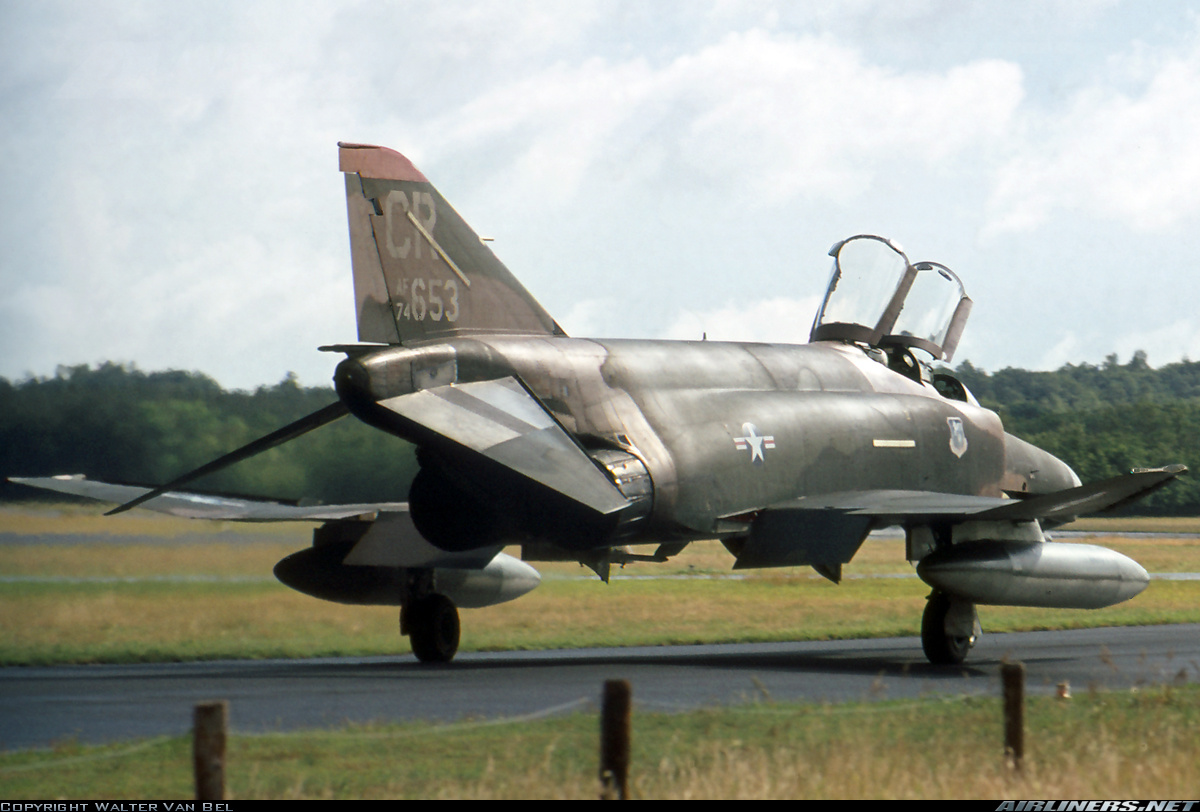
McDonnell Douglas F4E Phantom II USA Air Force Aviation Photo 1189377
The F-4 Phantom runs on two 17,900lb-thrust J79-GE-17 jet engines manufactured by General Electric.. F-4C, D and E are the variants for the US Air Force. The internal M61 Vulcan cannon was introduced in F-4E. The F-4G Wild Weasel V was an upgrade of F-4E and has the ability to carry anti-radiation missiles. The F-4K and M variants, developed.

McDonnell Douglas F4E Phantom II USA Air Force Aviation Photo 4886715
The F-4E, which was equipped with leading-edge maneuvering slats and weapons and radar controls that were optimized for dogfighting, vastly improved the Phantom's air-to-air capabilities..

McDonnell Douglas F4E Phantom II USA Air Force Aviation Photo 0662167
163d Attack Wing MCDONNELL DOUGLAS F-4E PHANTOM II The F-4E is essentially an F-4D with improved J79-GE-17 engines (900 pounds more static sea level thrust each) and an M61A1 "Vulcan" 20mm cannon. Operational experience gained in Vietnam had a direct influence on the addition of the cannon.
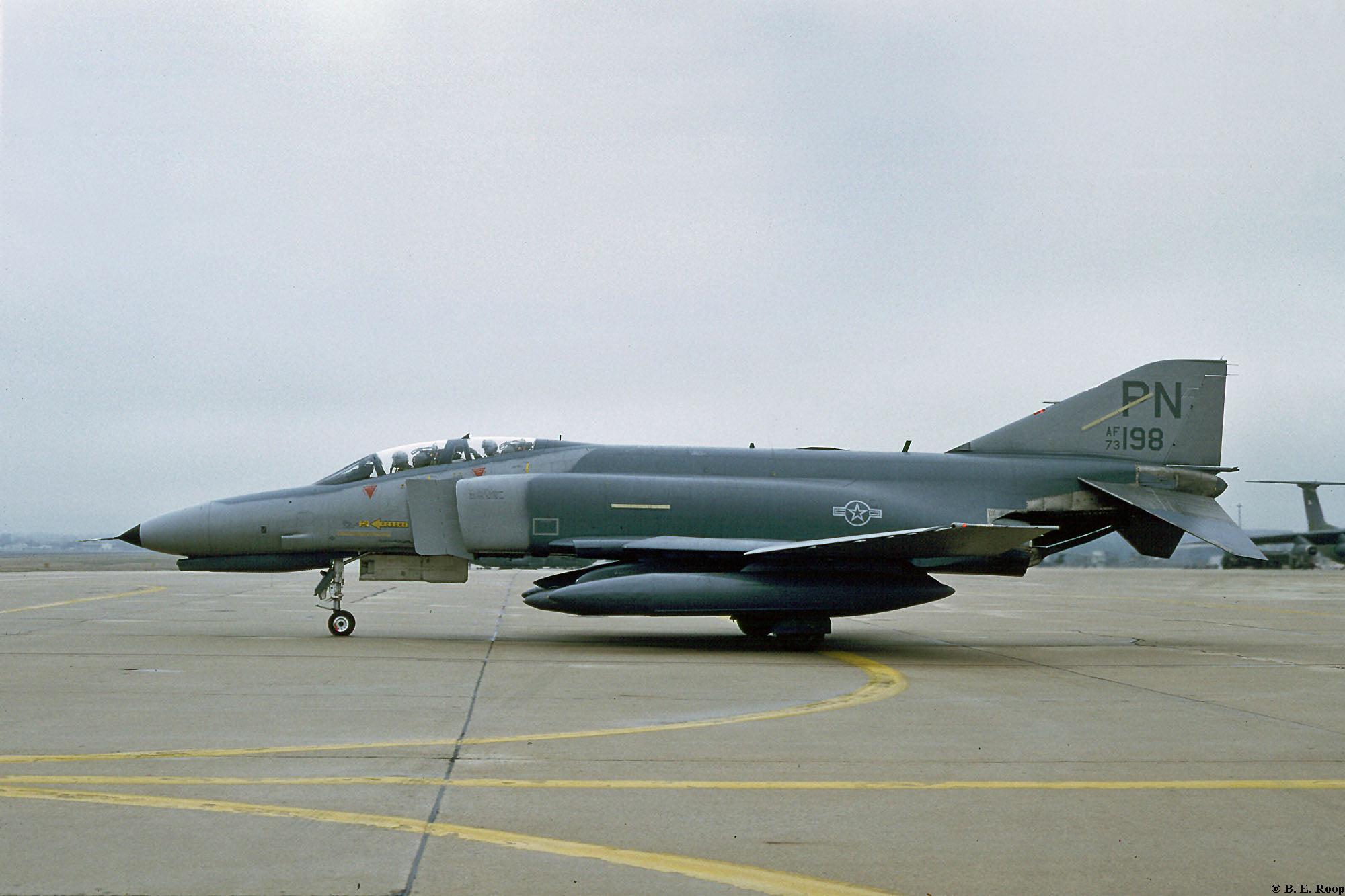
F4E "Phantom"
F-4 Phantom II non-U.S. operators are the non-U.S. nations with air forces that operate or used to operate the McDonnell Douglas F-4 Phantom II. The Phantom II entered service with the U.S. military in 1960 and served until 1996.

McDonnell Douglas F4E Phantom II USA Air Force Aviation Photo 5627491
The McDonnell Douglas F-4 Phantom II variants were numerous versions and designations of the F-4 and are described below. Production numbers for major versions asterisk indicates converted from other version Variants An XF4H-1 1959. F-4Bs from VF-213, 1967. XF4H-1 Two prototypes for the United States Navy, first flown 1958. F4H-1F (F-4A)

McDonnell Douglas F4E Phantom II USA Air Force Aviation Photo 2680036
The F-4X would have featured an increase in engine thrust by 150% to allow dash speeds of Mach 3.2, cruise at Mach 2.4, and flight up to 78,000ft (23,775m) altitude. Acquired by Israel in 1969 the McDonnell Douglas F-4E Phantom II quickly became the backbone of the Israeli Air Force (IAF) thanks to its range, payload and bombing accuracy.

McDonnell Douglas F4E Phantom II USA Air Force Aviation Photo 1690840
1 Description 2 General info 2.1 Flight performance 2.1.1 Details 2.1.2 Engine performance 2.2 Survivability and armour 2.3 Modifications and economy 3 Armaments 3.1 Offensive armament 3.2 Suspended armament 4 Usage in battles 4.1 Air-to-Air 4.1.1 Notable Air RB enemies 4.2 Ground Realistic 4.3 Pros and cons 5 History 6 Media 7 See also

McDonnell Douglas F4E Phantom II USA Air Force Aviation Photo 4941987
Designed to be a tandem two-seat, twin-engine, all-weather, long-range supersonic interceptor and fighter bomber, the F-4 Phantom II saw combat in Vietnam, Israel, Iran, and Turkey. At first, the aircraft's name was going to be either Satan or Mithras, but in the end, the plane maker went with the far less controversial Phantom II.
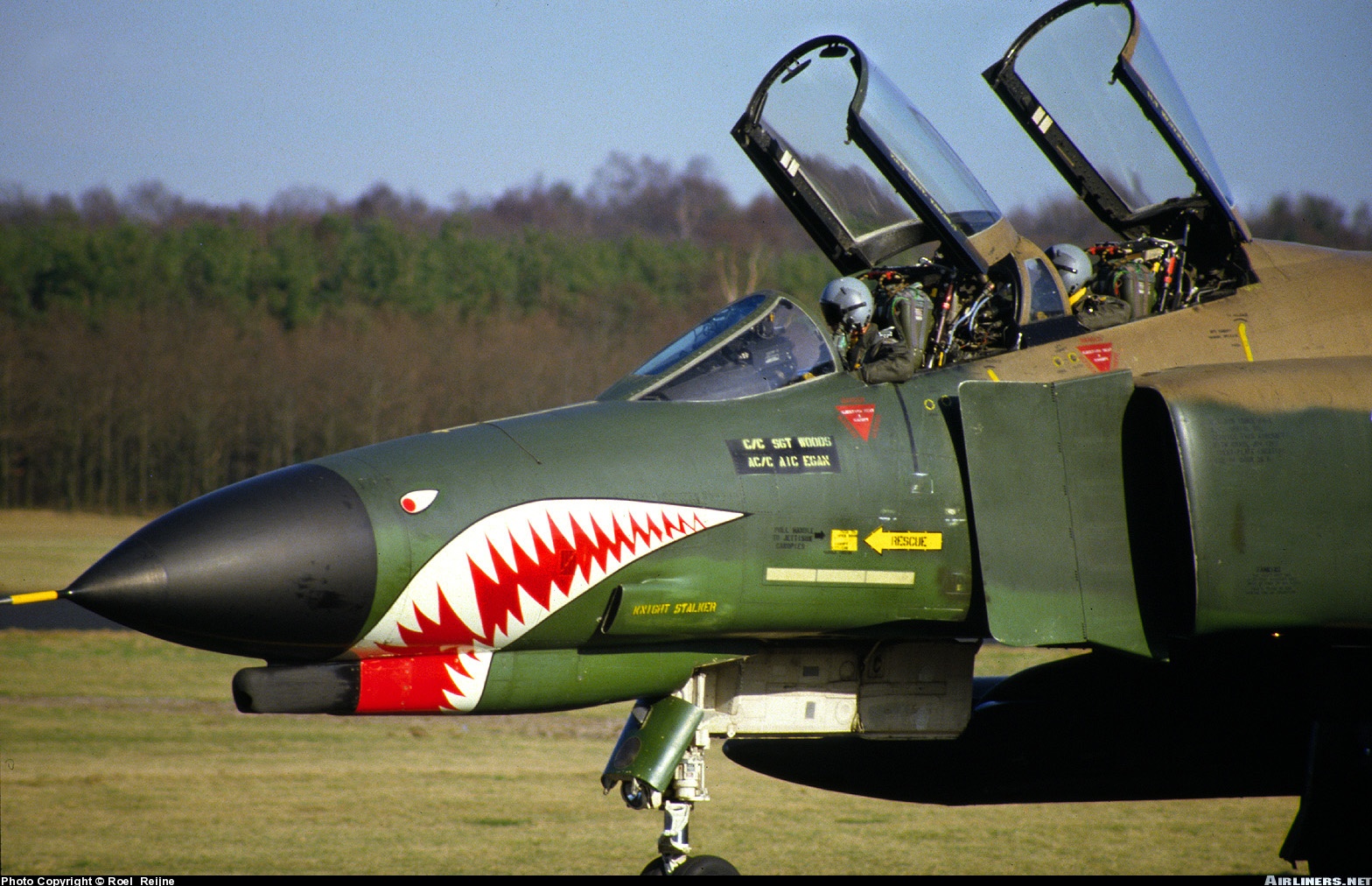
McDonnell Douglas F4E Phantom II USA Air Force Aviation Photo 0668220
By January 1962, it was flying with three branches of the military—the US Navy, USAF and USMC. It could carry a bomb-load greater than the Avro Lancaster or Boeing B-29 Superfortress, and would serve with twelve nations including Great Britain, West Germany, Spain, Australia, Greece, Turkey, Israel, Egypt, Iran, Japan and South Korea.
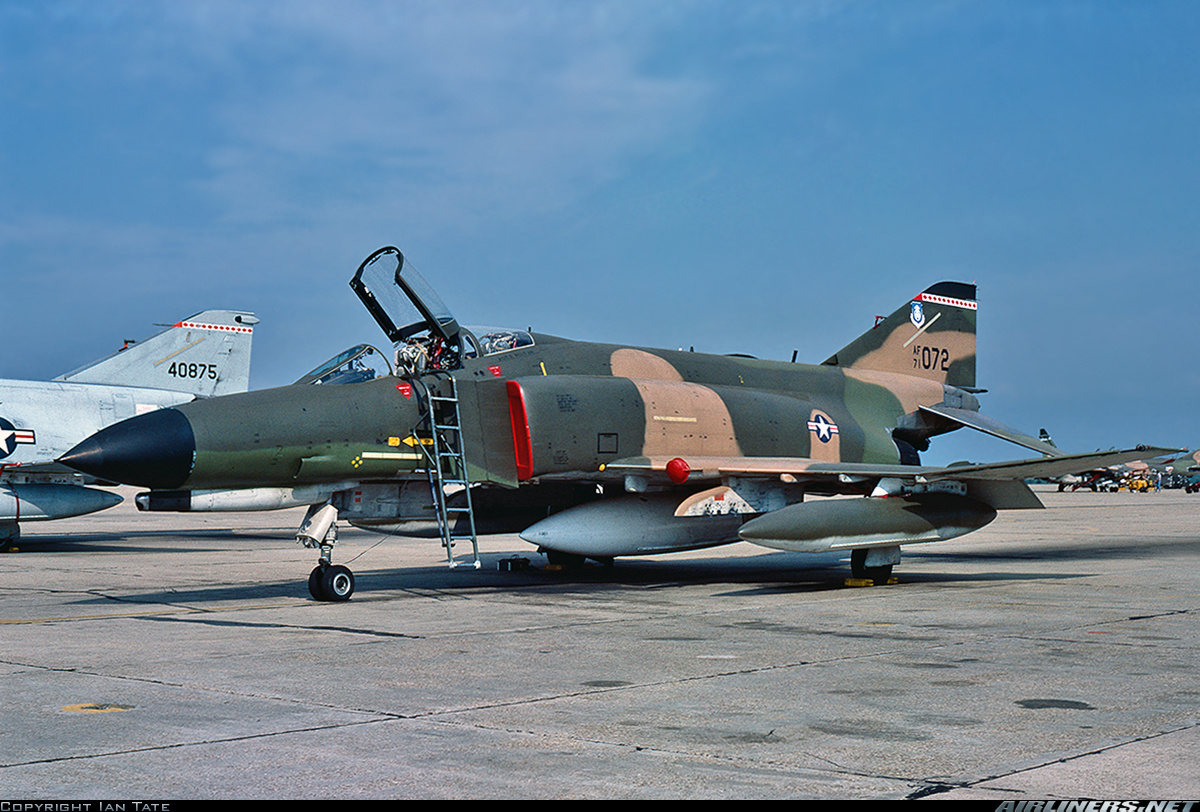
McDonnell Douglas F4E Phantom II USA Air Force Aviation Photo 2035008
Specifications (F-4E Phantom II) Operational History Vietnam Changing Missions Issues Other Users By Kennedy Hickman Updated on January 20, 2020 In 1952, McDonnell Aircraft began internal studies to determine which service branch was most in need of a new aircraft.

McDonnell Douglas F4E Phantom II USA Air Force Aviation Photo 5701591
The F-4E also had an internally mounted 20mm multibarrel gun with improved fire-control system. When operating in the attack or close air support role, the aircraft normally carried air-to-air missiles for self protection. Background First flown in May 1958, the Phantom II originally was developed for U.S. Navy fleet defense.

FileF4 Phantom in flight Apr 1982.jpg Wikipedia
The F-4E is the most produced version of the Phantom with a total of 1,387 built for the U.S. Air Force and foreign customers. Service History Built by McDonnell Douglas in St. Louis, MO and delivered to the Air Force on December 16 th 1967. December 1967 To 33 rd Tactical Fighter Wing, Eglin AFB, Florida.

McDonnell Douglas F4E Phantom II USA Air Force Aviation Photo 4240247
Aviation History Exploring the legacy of the F4 Phantom: history and notable features by Rosita Mickeviciute 2023-07-14 5 minute read An iconic fighter jet that has left a lasting mark on aviation history, the McDonnell Douglas F4 Phantom continues to captivate enthusiasts even today.

McDonnell Douglas F4E Phantom II Photo Gallery Image dfst8713068
Phantom operations at Suwon were halted for about three months last year, after an F-4E of the 153rd FS crashed into the Yellow Sea during a mission on Aug. 12, 2022. Both crew members managed to.
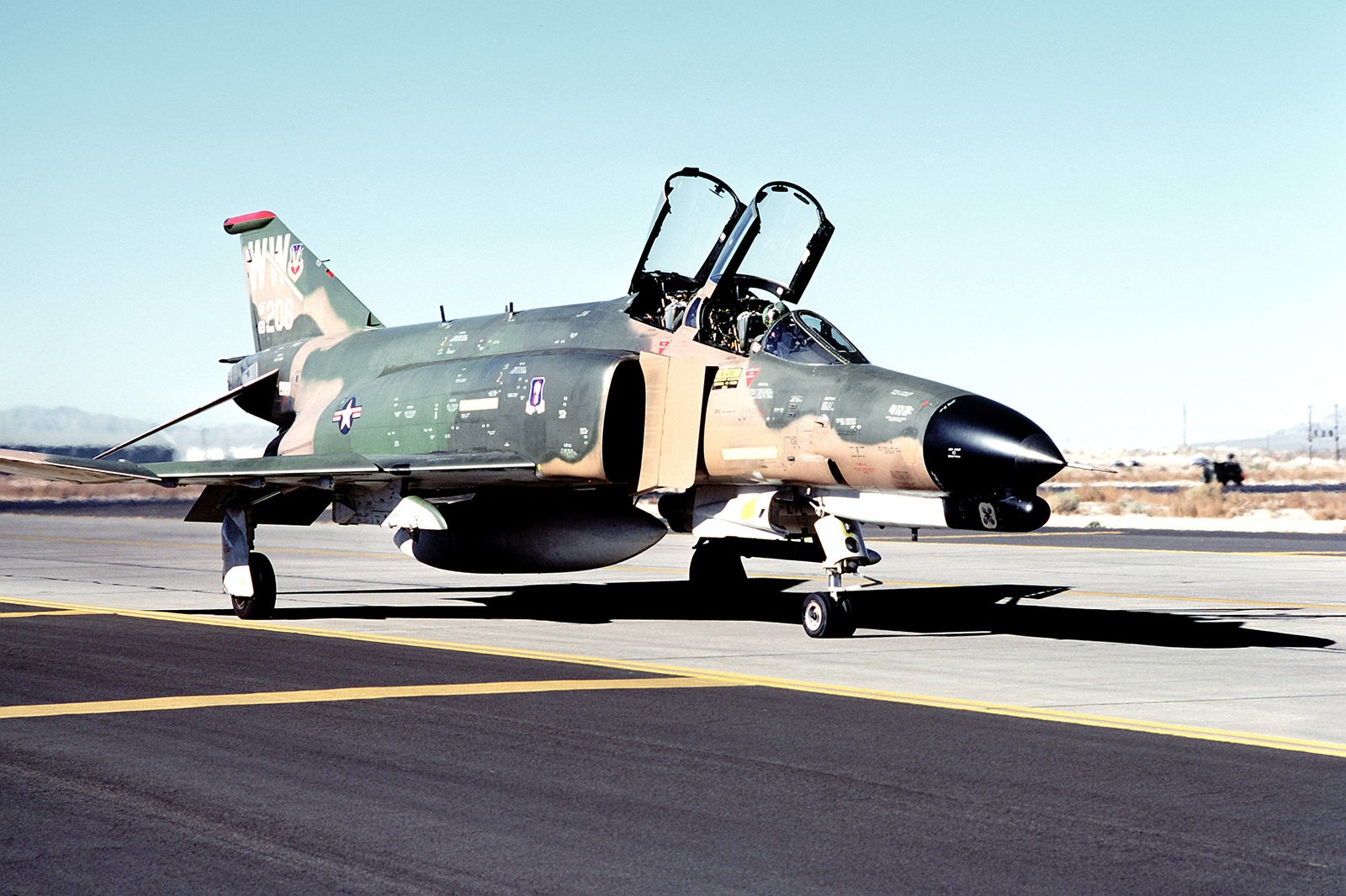
Front view of an F4E Phantom II aircraft assigned to the 474th Tactical Training Wing, parked
The Phantom 2000 will overcome the Phantom's principal handicap-the dramatic strides made in fighter radars since the F-4E model was introduced in 1966. Meanwhile, Israel also employs the Phantom for a variety of test missions, including development work on the Gabriel Mark 3 anti-shipping missile.

wallpaper mcdonnell douglas, f4e, phantom ii HD Widescreen High Definition Fullscreen
The McDonnell Douglas F-4 Phantom II [N 1] is an American tandem two-seat, twin-engine, all-weather, long-range supersonic jet interceptor and fighter-bomber originally developed by McDonnell Aircraft for the United States Navy. [2]